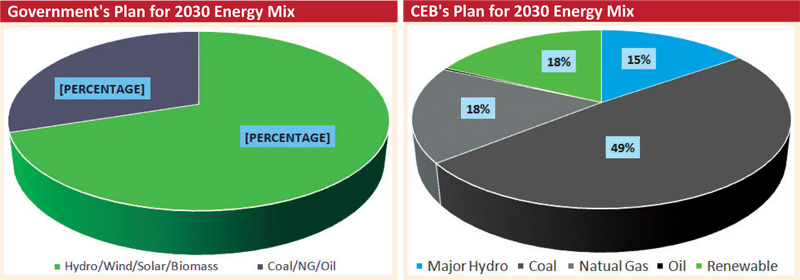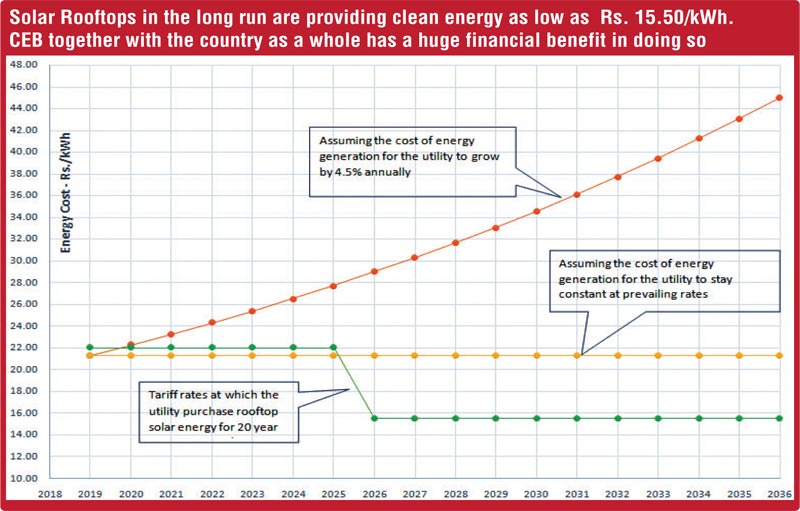Tuesday Dec 09, 2025
Tuesday Dec 09, 2025
Friday, 25 June 2021 02:35 - - {{hitsCtrl.values.hits}}
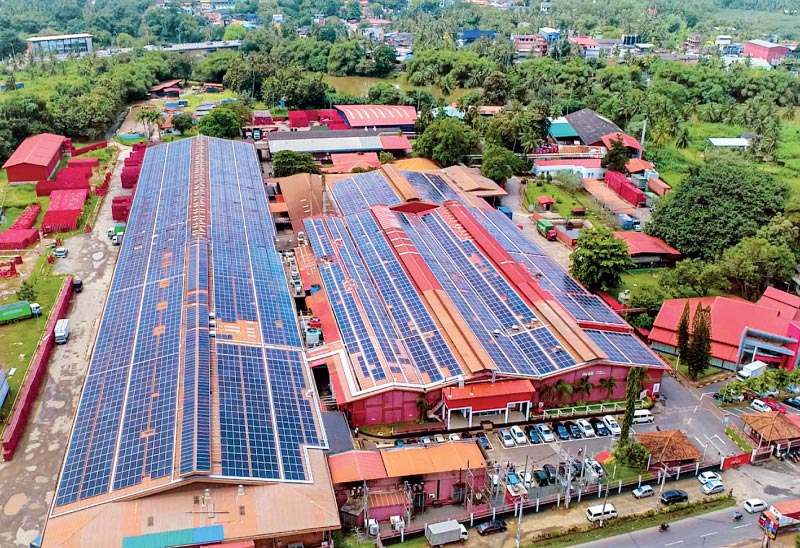
The Solar Industries Association of Sri Lanka General Secretary Lakmal Fernando in this interview with the Daily FT shares key insights to the burning issues concerning the solar rooftop industry. Fernando has been a pioneer in the solar rooftop industry in Sri Lanka and has a wealth of experience in contributing to the renewable energy sector in various ways. He is the Managing Director/CEO of Regen Renewables Ltd., one of the leading Solar EPC companies in Sri Lanka.
|
The Solar Industries Association of Sri Lanka General Secretary Lakmal Fernando
|
Q: Give us a brief introduction of the solar rooftop industry in Sri Lanka?
The solar rooftop industry has played a pivotal role in Sri Lanka’s renewable energy sector and her economy over the past decade, becoming one of the most lucrative renewable energy sources with proven potential within a short time. The industry started with net-metering in 2011, and over the next five years, solar rooftops added 31 MWs to the national grid via 6,000 domestic systems. The scale of implementation escalated exponentially with the introduction of Net-Accounting and Net-Plus in 2016. Today, Sri Lanka proudly generates over 341 MWs from solar power, with 31,200 roof owners joining this globally important task. These 31,200 customers have saved a colossal amount of money for the country.
Q: Global warming is happening right in front of us. What commitments have we made as a responsible country to minimise greenhouse gas emissions?
Sri Lanka signed the Paris Agreement for climate change in 2016. This is a legally binding international treaty on climate change. It was adopted by 196 countries and entered into force on 4 November 2016. Its goal is to limit global warming to well below 2, preferably to 1.5 degrees Celsius, compared to pre-industrial levels. As a sovereign nation, Sri Lanka committed to reduce our greenhouse gas emissions to a considerably lower level by 2030 by signing this agreement.
Sri Lanka’s energy demand is approximately 15,000G Wh currently and it is forecast to reach 30,000G Wh in 2030. Solar power was the only significant renewable energy source added to the national grid after signing the Paris Agreement. As it stands, we are falling far short of the anticipated RE goals and unless we start working on rapid implementation of RE to the grid as a country, we will have to face the consequences.
Q: What is the political leadership the Government has offered to address the international commitments?
In 2019 December, as soon as President Gotabaya Rajapaksa assumed duty as the President of Sri Lanka, he made a commitment to his countrymen. He vouched to generate 80% of the total energy requirement of Sri Lanka by 2030. This was a solid statesmanship and in fact it was a statement in his election manifesto which people took very seriously. Here the President very clearly understood the gravity of what we have committed as a country and was trying hard to keep up with his commitments to the world.
Q: Is the power utility committed to achieve the goals set by the Government?
Within less than three months of this statement of the President, the power utility tabled a special cabinet paper to build a 300MW coal plant alongside Norochcholai. During this time and even to date the power utility is in a major commitment to justify coal plants by using public media investing their funds. They have misled the President, Prime Minister, and the Cabinet of Ministers with a word ‘clean energy’ instead of renewable energy. This is a very unprofessional approach to deceive the lawmakers and the general public. Any schoolchild would know that clean energy can be generated only from renewable sources and it is not possible to generate clean energy by burning hydrocarbon.
Government officers in any country with reasonable knowledge would adhere to the national policy when it is announced and align with the same to deliver the targets. In the power utility, it went the other way. The power utility seniors rallied around the lawmakers and cried for sympathy with their inability to deliver the national commitment. They somehow got the mandate to reverse the President’s decision of 80% RE to 70%. Accordingly, during the budgetary proposals presented to the Parliament last year, target of achieving 70% of electricity energy generation by 2030 with renewable sources was proposed and passed as policy.
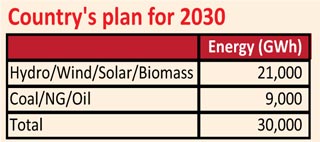 |
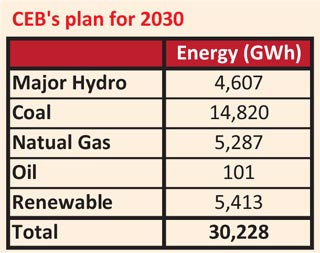 |
Q: How have the solar rooftops contributed to the economy of Sri Lanka and has any impact been made by your industry?
Conventionally the energy demand curve starts peaking around 6 p.m. and ends its peak around 9:30-10 p.m. However, since the recent past this has started changing. The peak has started shifting to daytime and it is predicted that Sri Lanka will have a flat energy demand curve by 2030.
This is a particularly important piece of news for Sri Lanka and its rooftop industry. 31,200 solar rooftops installed so far are scattered all over the country. They generate around 450 million kWh annually. This energy is used at source and hence zero cost of transmission loss to the power utility. Usually, their transmission loss is around 10% and for rooftop solar it is zero. The power utility pays the solar rooftop owner Rs. 22/kWh for the first seven years and then Rs. 15.50/kWh thereafter for the remaining 13 years. The rooftop owners are an integral part of the civil society of our country. The money the power utility pays, does not go into the hands of multinational giants and end up in some other country by negatively impacting our balance of payment.
If 31,200 customers did not do this what would this energy be made from? Diesel, emergency power, gas turbines? It is the avoidance cost of anything between Rs. 33 to Rs. 60 per kWh. Financial impact on the country’s economy and the balance of payment would have been anything between Rs. 14 billion to Rs. 22 billion annually. ($ 70 m to $ 112 m). Most importantly, the solar rooftop industry’s addition of 340 MW systems avoided the necessity of purchasing high-cost emergency power for CEB, in 2020 to-date.
This is due to solar rooftops generating energy during daytime peaks, and allowing the hydro capacity to take up the bulk of peak demand at night. This relieved the dependency of the power utility on costly thermal generators, saving billions of rupees in foreign exchange. This alone is reason enough for the power utility to wake up and aggressively promote rapid integration of solar rooftops instead of intentionally blocking and killing it.
Q: CEB proposes a Long-Term Generation Plan applicable for a long period of time for the entire energy sector. Do you think the current Long Term Generation Plan is in line with the national policy?
In this regard I would like to structure my answer in two folds.
What long-term generation plan mix should be in 2030:
If we are to go to the renewable energy target of 70% by 2030, we should generate approximately 21,000 GWh of energy from major hydro, mini hydro, wind, solar and biomass. All other technologies except solar and wind energy have its own limitations. We barely have very few major hydro projects to develop. There is some mini hydro potential but in terms of accessibility it’s very difficult. Biomass has some potential but no tariff being offered and lot of barriers. Looking at all these the only two easily accessible sources are wind and solar. Intermittency in wind is extremely high therefore not very viable to add large volumes without battery for smooth absorption for a smaller grid of our nature. Whereas solar, has all positives characteristics lined up for seamless integration.
Current CEB’s plan for 2030:
As per the last approved long-term generation plan the CEB proposed energy mix by 2030 is as follows.
This is not the Government policy. The power utility has thus far failed to come out with a credible plan to implement the Government target of 70% renewables by 2030. Even though 70% RE energy generation by 2030 was passed in Parliament, it’s yet to be formalised with a gazette. CEB is using this opportunity to propose only 33% renewable energy by 2030 and it lets down the country in the eyes of the global landscape.
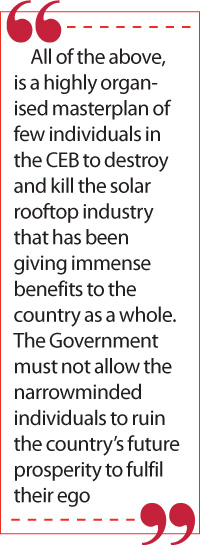 Q: What potential has the industry specialists identified for solar rooftop industry for the next 10 years in Sri Lanka?
Q: What potential has the industry specialists identified for solar rooftop industry for the next 10 years in Sri Lanka?
Sri Lanka has over 6 million energy consumers. So far, we have only installed rooftop systems in 31,200 of them leaving us over 5.9 million roofs to install solar. Our aim should be to convert a minimum of 1 million rooftops into micro powerhouses by 2030 as per targets of the Soorya Bala Sangramaya scheme. With a minimum 3 kW solar rooftop system on one million roofs will give us a total of 3 GW of installed capacity. You can imagine the saving this can do for our country. The energy bought by the power utility is long term (20 years) rupee contracts. Unlike any other fossil fuel-based energy sources this price will not change with the rupee depreciation. Historically Sri Lankan currency has depreciated 5.5% per year. But this year was way different. During the first three months of the year Sri Lankan Rupee has depreciated over 10% against US$. For understanding sake, the given graph is extrapolated for 20 years to determine what energy price would look like in 20 years’ time considering the currency depreciation as 4.5% per annum.
Q: Is the power utility playing a supporting role or being destructive for rapid implementation of solar rooftop projects?
Systematic killing by bringing in barriers for rooftop solar
CEB has already stopped issuing approvals for solar rooftop integration in many places in the north and east of Sri Lanka. Further various charges are being added as deterrent measures to discourage customers to apply for solar connectivity.
So far, the CEB has considered the contract capacity of the customer in approving solar power projects on the roofs of the commercial establishments (contract demand). Recently they have changed this by issuing a unilateral circular dated 8 April 2021. Accordingly, the capacity of the proposed solar power system to be built on the roofs will be determined by the maximum number of kVA units consumed on one electricity bill in the last six months (maximum KVA units in last 6 months).
Many factories, hotels and offices in Sri Lanka and around the world have been operating at less than half of their capacity in the last whole year. Declining global demand for the garment industry in particular, non-attendance of tourists and restrictions on office visits under quarantine laws have reduced electricity bills in Sri Lanka’s industries, hotels and offices approximately to around 50%.
Based on such an unusual short-term situation, the CEB is bringing in new bills to plan projects for the next 20 years that are going to cripple the entire solar rooftop industry. Further any industry starting-up a new facility will have to wait for six months even to be eligible to apply. It is prudent to install a solar system during the facility erection stage itself, to minimise operational hindrances and to optimise the energy generation.
All of the above, is a highly organised masterplan of few individuals in the CEB to destroy and kill the solar rooftop industry that has been giving immense benefits to the country as a whole. The Government must not allow the narrowminded individuals to ruin the country’s future prosperity to fulfil their ego.
We are hopeful that the President, Prime Minister, Cabinet Minister and State Minister, together with Ministry officials, the Sustainable Energy Authority and responsible engineers of CEB, will come forward to save this nationally-important industry before it is too late.
